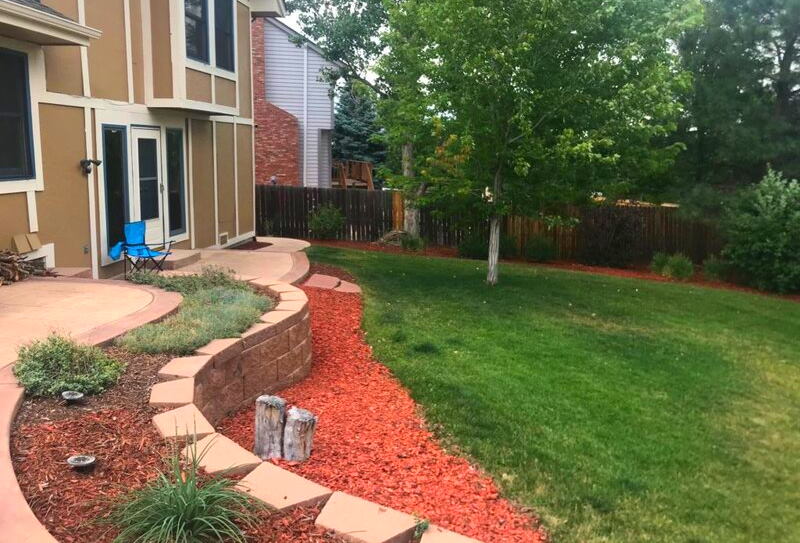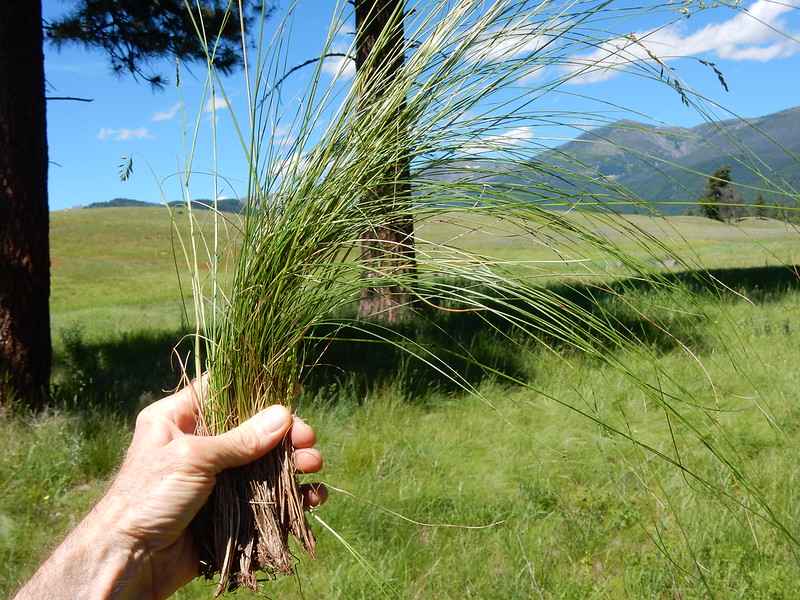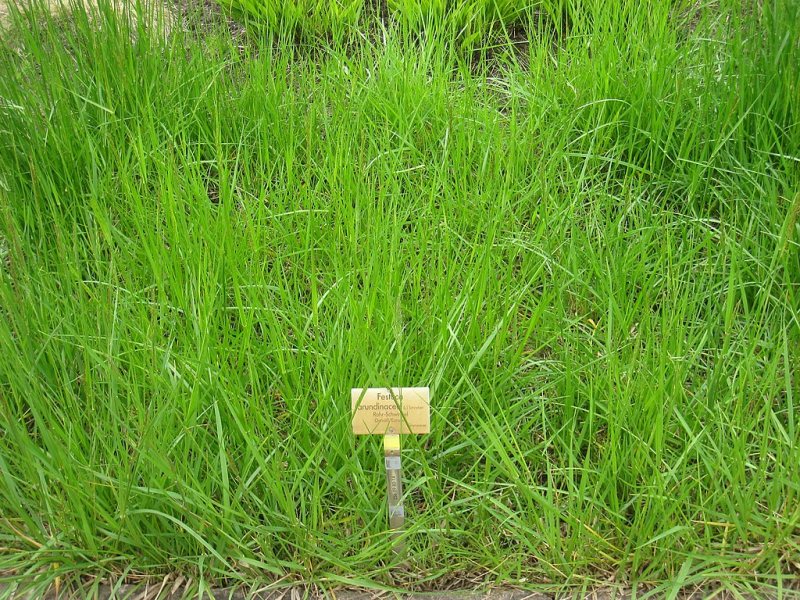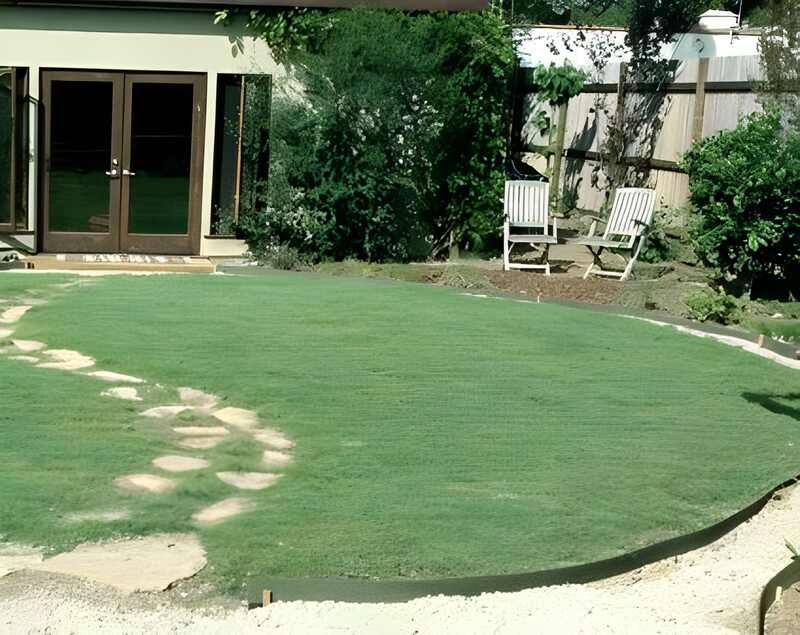Grasses That Thrive in Des Moines, Iowa
BY AMANDA SHIFFLER | MAY 15TH, 2023 | DES MOINES, IOWA, LAWN CAREEveryone knows that Iowa is one of the best places for growing corn and soybeans. But the humid continental climate and rich prairie soil is also fantastic for growing plush, terrific lawns.
Still, not every type of grass thrives here, and not every grass is ideal for your lifestyle. Whether you’re looking for something that tolerates the high foot traffic of Sunday afternoon flag-football games or one that doesn’t require frequent mowing, there is a grass that suits your needs. Below are the grasses that thrive in Des Moines.
In this article:
- Cool-Season Or Warm-Season Grass?
- 5 Best Grasses for Des Moines
- The Basics of Different Grass Types
- Considerations for Choosing a Type of Grass
- Choosing a Grass Seed Mix
- When to Plant Grass Seed
- FAQ
Understanding Cool-Season Versus Warm-Season Grasses
Turfgrasses are classified as either cool-season or warm-season grasses, and it’s essential to understand the difference and ensure you’re planting the right type for your climate.
In the northern United States, most lawns are cool-season grasses that are adapted to colder temperatures. They start growing when temperatures are just above freezing (40 to 42°F) in early to mid-spring and stay green well into October or November, when they go dormant to survive being buried under snow.
Cool-season grasses grow the most, producing the most biomass in the spring and late fall when soil and air temperatures are 65 to 75°F. Since they have adapted to survive below-zero climates, they aren’t as adapted to hot summers. They do well when temperatures are milder in July and August but need more water when it’s hot to stay green.
Common cool-season grasses:
- Annual ryegrass (Lolium multiflorum)
- Creeping bentgrass (Agrostis palustris)
- Creeping red fescue (Festuca rubra var. rubra)
- Kentucky bluegrass (Poa pratensis)
- Perennial ryegrass (Lolium perenne)
- Tall fescue (Festuca arundinacea)
Conversely, warm-season grasses are better adapted to southern climates and the summer heat. They tolerate drought better and continue to grow when temperatures soar but don’t grow as well in cooler temperatures. Because of this, they grow for a shorter period and don’t stay green as long.
Common warm-season grasses:
- Bahiagrass (Paspalum notatum)
- Bermuda grass (Cynodon dactylon)
- Buffalo grass (Buchloe dactyloides), carpetgrass (Axonopus affinis)
- Centipedegrass (Eremochloa ophiuroides)
- St. Augustine grass (Stenotaphrum secundatum)
- Zoysia grass (Zoysia japonica)
5 Best Turfgrasses for Des Moines
Kentucky Bluegrass (Poa pratensis)

Photo Credit: Brenda Ryan / Wikilawn
Kentucky bluegrass (KBG) tops our list because it’s a prime choice for many homeowners and commercial sod growers in Iowa and the Midwest. This dark green turf creates a dense blanket across your yard and has the best winter hardiness of the cool-season grass types.
Kentucky bluegrass tolerates partial shade, but plant it in full sun to see it in its glory. The seed is slower to germinate and establish than some other grasses, but because it spreads by underground stems known as rhizomes, it holds up well and recovers quickly from foot traffic. Bare spots from kids or pets inclined to dig holes will also fill in quickly.
Compared to other turfgrasses, the shorter root system on KGB does compromise its drought tolerance a little, so you will need to water it more than some lawns. That being said, it also requires more maintenance regarding fertilization and mowing to keep it lush and dark green.
- Classification: Cool-season grass
- Color/Texture: Dark green, medium texture
- Shade Tolerance: Low to moderate
- Drought Tolerance: Moderate
- Foot Traffic Tolerance: Moderate (rhizomes help it recover well)
- Maintenance Needs: High
- Mowing Height: 2 ½ to 3 inches
- Spreads By: Rhizomes
- Potential for Disease: Moderate; susceptible to necrotic ring spot and summer patch
- Soil pH: 6 to 7.5
- Soil Type: Well-drained, highly fertile soils
Other notes: During the growing season, water requirements for Kentucky bluegrass are pretty high. It will go dormant during droughts and survive four to six weeks without water.
Fine-Leaf Fescues (Festuca spp.)

Photo Credit: Matt Lavin / Flickr / CC BY-SA 2.0
Another first-rate option for a Des Moines-area lawn is one of the five turfgrasses grouped as fine-leaf fescues. Fans love the soft, fine texture of the narrow leaves on chewings fescue, hard fescue, sheep fescue, slender creeping red fescue, and strong creeping red fescue. Fine fescues also have excellent shade tolerance, hold up to moderate foot traffic, and tolerate low soil fertility.
Strong creeping red, hard, and chewings fescues are popular in the midwestern United States, usually blended with other grasses. Fine fescues can be sown straight in partially shaded yards because of their tolerance. Still, these low-maintenance grasses are typically sown with Kentucky bluegrass or perennial ryegrass to improve the lawn’s aesthetic.
- Classification: Cool-season grass
- Color/Texture: Medium to dark green, soft texture
- Shade Tolerance: High
- Drought Tolerance: High
- Foot Traffic Tolerance: Moderate
- Maintenance Needs: Low
- Mowing Height: 1 to 3 inches
- Spreads By: Bunch-type grass, except for creeping red fescues, which have rhizomes
- Potential for Disease: Moderate (some species have high resistance while others have low resistance); susceptible to summer patch, snow molds, red thread, and dollar spot
- Soil pH: 6 to 6.5
- Soil Type: Well-draining
Other notes: While fine fescues have good drought tolerance, they quickly lose color in hot, dry conditions.
Perennial Ryegrass (Lolium perenne)

Photo Credit: Dr Mary Gillham Archive Project / Flickr / CC BY 2.0
If you’re hurrying to start a lawn, perennial ryegrass is a good option. This cool-season bunchgrass germinates in under a week to get you well on your way to a beautiful, medium to dark-green lawn. Its ability to establish rapidly is one of the reasons it’s so popular for both permanent and temporary lawns.
Perennial ryegrass is excellent if you have small children roaming outdoors, teenagers who like to roughhouse, or pets running circles around the yard. It handles abuse well, but once damaged or a thin spot arises, it can’t self-repair because it grows in clumps and doesn’t send out rhizomes.
Perennial ryegrass also doesn’t tolerate cold temperatures well and may thin if exposed to temps below 30°F for long periods.
If you want to plant it and forget it, perennial ryegrass is not for you. It is another moderately high-maintenance, cool-season grass type. You’ll need to mow and water it regularly and reseed areas when they thin.
- Classification: Cool-season grass
- Color/Texture: Dark green, fine texture
- Shade Tolerance: Moderate
- Drought Tolerance: Moderate
- Foot Traffic Tolerance: High, but low ability to recuperate,
- Maintenance Needs: Moderate
- Mowing Height: 1 ½ to 2 ½ inches
- Spreads By: Bunch-type grass
- Potential for Disease: Moderate; susceptible to gray leaf spot and rust
- Soil pH: 6.0 to 7.0
- Soil Type: Well-draining, highly fertile
Other notes: Perennial ryegrass is often blended with Kentucky bluegrass because of its fast germination and foot traffic tolerance.
Tall Fescue (Festuca arundinacea)

Photo Credit: Daderot / Wikimedia Commons / Public domain
Another bunchgrass, tall fescue grows upright in clumps and primarily spreads through vertical shoots off the base of the plant. These tillers create identical clones of medium to dark green, broad, coarse grass blades. The lack of underground spreading means it requires reseeding when bare spots appear.
Tall fescue is an ideal low-maintenance grass type and does well in full sun or partial shade. A naturally extensive root system easily grows down 2-3 feet in the soil. This strong root system makes the grass very resilient, so tall fescue is well suited for high-traffic play areas and non-irrigated lawns.
- Classification: Cool-season grass
- Color/Texture: Medium to dark green, coarse texture
- Shade Tolerance: Moderate
- Drought Tolerance: High
- Foot Traffic Tolerance: High, but doesn’t recover well
- Maintenance Needs: Low (but requires frequent mowing)
- Mowing Height: 3 ½ to 4 inches
- Spreads By: Bunch-type grass
- Potential for Disease: Low; susceptible to brown patch
- Soil pH: 5.5 to 6.5
- Soil Type: Fertile, well-draining clay soils
Other notes: Do not mow improved varieties shorter than 3’ tall. A shorter mowing height encourages weed growth.
Buffalograss (Bouteloua dactyloides)

Photo Credit: Susan Harris / Flickr / CC BY 2.0
Coming in as our honorable mention, buffalograss is a warm-season species that is often used in and around Des Moines. The only warm-season grass on the list, it has been used historically for grazing animals and pastures but also appears in Iowa along low-maintenance landscape areas like roadsides and city streets.
Buffalograss is a fantastic choice if you’re looking for a highly sustainable lawn option. Native to the North American prairies, this finely textured perennial grass is one of the few native types of grass that forms a dense, soft sod suitable for lawn use with minimal mowing.
As a native species, extreme temperatures, high pH soils, and drought are no issues for buffalograss. You will see hampered growth if you’re trying to grow it in the shade.
The big drawback to this warm-season grass is it will begin to lose its green color and go dormant as soon as the first frost hits in the fall.
- Classification: Warm-season grass
- Color/Texture: Gray-green to yellow-green
- Shade Tolerance: Low
- Drought Tolerance: High
- Foot Traffic Tolerance: Low
- Maintenance Needs: Low fertilizer and mowing needs. Develops thatch and requires weed control.
- Mowing Height: 2 to 3 inches
- Spreads By: Stolons
- Potential for Disease: Good tolerance against diseases and insects
- Soil pH: 6.5 to 7.5
- Soil Type: Native clay soils, not sandy soils
Other notes: Buffalograss grows 8 to 10 inches high when left unmowed.
Considerations When Choosing Turfgrass
When it comes to deciding between the different recommended types, you have to consider some factors that are specific to your yard. When choosing a grass type for your Des Moines lawn, it is essential to pick something that thrives in your space.
- Sun Exposure
- Foot Traffic
- Maintenance Requirements
How Much Sun Does Your Yard Get?
Like choosing flowers for your garden, you must pick a turfgrass that corresponds with your yard’s sun exposure.
Does your yard get more than 6-8 hours of sun daily? Is it free of big trees and isn’t shaded by your neighbor’s house? If so, pick a turf that grows in full sun.
Grass types for full sun:
- Kentucky bluegrass
- Perennial ryegrass
Does your yard get less than four hours of sun throughout the day? Is it shaded by a privacy fence, giant trees, or your neighbor’s house? If so, you need grass that grows in full shade.
Grass types for shade:
- Fine fescue
- Tall fescue
Or is your yard a mix of both? If that’s the case, you need a turfgrass that tolerates all sun conditions.
Grass types for a combination of both sun and shade:
- Perennial ryegrass
- Fine fescue
- Tall fescue
How Much Foot Traffic Runs Across Your Lawn?
Does your yard see a constant flurry of activity? Do you have dogs or kids running through the grass regularly? Are you often inviting friends and family over? If so, choose a grass that tolerates and recovers well from foot traffic.
Best grasses for high-traffic lawns:
- Perennial ryegrass
- Tall fescue
- Grass seed mixes with perennial ryegrass or tall fescue
Is your yard pretty secluded and doesn’t get played in often? If so, choose something with lower foot traffic tolerance.
Best grasses for low to moderate traffic:
- Kentucky bluegrass
- Fine fescue
What Are the Maintenance Requirements?
Are you a homeowner who loves to work outside when the weather is nice? Do you like fertilizing, mowing, and weeding? Then you may enjoy a high-maintenance grass type.
High to medium-maintenance:
- Kentucky bluegrass
- Perennial ryegrass
- Tall fescue
But if you don’t like these lawn care chores, opt for something low-maintenance instead so you can spend your free time doing more exciting things.
Grasses with a low or moderate maintenance level:
- Fine fescue
- Buffalograss
Planting Cool-Season Grass Seed Mixes
Across much of the Midwest, many people like to grow lawns with a blend of different turfgrass species. This genetic diversity improves the overall disease resistance of the yard, and the turf is often better adapted to growing in varied conditions such as part-shade.
Unfortunately, there aren’t many warm-season grass seed blends available for purchase. You can buy grass seeds containing a mix of Bermudagrass cultivars but not different types. This lack of grass seed blends is because there is such a varied difference in the color, shade tolerance, and watering needs of warm-season turfgrasses.
When choosing a grass seed blend, ensure the mix’s dominant species best fits your yard conditions.
When Should I Plant My Des Moines Lawn?
The goal with seeding — whether overseeding an existing lawn or starting one from scratch — is to get seed down just before your grass type goes into its active growth period.
Pro Tip: Cool-season grasses are best seeded between August 15 and October 1. They’ll have about six weeks to grow before the first fall frost.
That doesn’t mean you can’t plant in the spring. Just understand spring isn’t the best time for cool-season grasses. This timing usually brings warm soils, cooler temperatures, and frequent rainfall—all of which encourage quick germination, so the grass has an excellent jump-start.
It’s also essential to understand that cool-season species can handle colder temperatures better than heat. Seeds do better when planted in the fall, just as the grass goes dormant for the winter, versus in the spring with the stress of summer heat bearing down.
On the other hand, as a warm-season grass, bermudagrass should be seeded about June 1st. Warm-season grass species grow the most when it’s hot to establish well before fall/winter dormancy.
FAQ
When you plant depends on your regional climate and the type of grass you’re growing. In northern regions, it’s best to plant cool-season grasses in the fall. Wait for hot summer temperatures to subside, but give the grass time to establish before the first fall frost. In the south, the best time to plant warm-season grasses is in late spring or early summer, just as the temperatures begin warming up.
Warm-season grasses need hot summer temperatures and mild winters without snow; they grow mainly in the southern United States. Cool-season grasses need more temperate summer conditions but can survive harsh winters; they grow primarily in the northern United States.
Planting grass seed at least six weeks before your first anticipated hard freeze in the fall is best. Your grass then has time to establish a root system before it goes dormant. You can plant later, but cool-season grasses won’t grow if temperatures are below 40 or 42°F, so the growth may be lackluster.
Need More Help With Your Des Moines Lawn?
Picking the right grass type for Des Moines and the surrounding area can be daunting, especially if you’re a new homeowner or have never had to handle lawn care. Thankfully, you don’t have to tackle any of it alone!
The experts at WikiLawn want you to have the best, most beautiful lawn imaginable.
We’ll help you choose the grass for your yard and can set you up with service professionals to mow, fertilize, or handle weed control. So take the first step towards the lawn your neighbors will envy!
Main Photo Credit: Iowa State Capitol / Pixabay